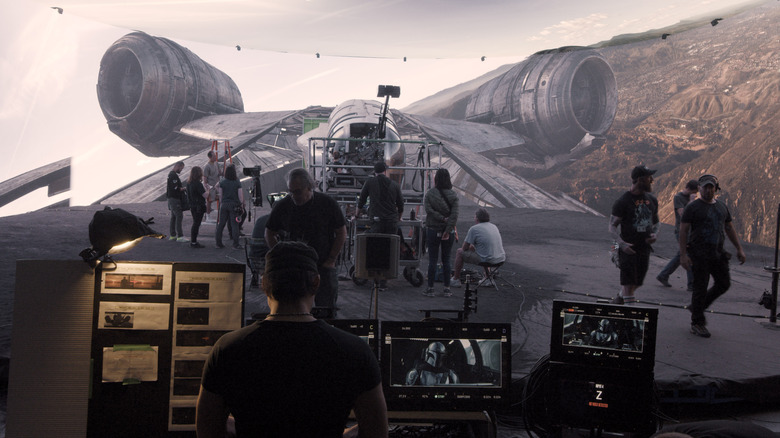Lawrence Kasdan On What Makes Industrial Light And Magic Still The Best VFX Shop In The World - Exclusive
In the new Disney+ documentary series "Light and Magic," director Lawrence Kasdan takes an in-depth look at the birth and history of Industrial Light and Magic (ILM), which began as a fledgling visual effects shop stuck in a hot Van Nuys, California, warehouse — and eventually became Hollywood's leading creative center for finding new ways to bring filmmakers' visions to the screen, with the company still breaking new ground to this day.
ILM was founded in 1975 by director George Lucas, who needed a special effects house for his new movie, "Star Wars." But he discovered that most of them — even the in-house department at the studio behind the project, 20th Century Fox — were out of business (via Julie Turnock's book "Plastic Reality").
Just like the ragtag army of fighters, pilots, and idealists that made up the Rebel Alliance in his then-unheard-of space opera, Lucas assembled a disparate team of film buffs, cinematographers, sculptors, model makers, and painters in the hopes that they could figure out ways to bring his sci-fi fantasy to life in ways that had not been seen before on the screen.
They managed to do it — and in the process, changed cinema history and created a new gold standard for visual effects. Asked why ILM is still the best at what they do, Kasdan told Looper about the traditions that persist to this day.
Star Wars was just the beginning for ILM
Following the unprecedented success of "Star Wars" in 1977, George Lucas kept ILM up and running for its sequels, "The Empire Strikes Back" and "Return of the Jedi," as well as the Lucas-produced "Raiders of the Lost Ark" (all written or co-written by Lawrence Kasdan).
ILM later expanded its operations and began creating visual effects for hundreds of projects, from the "Star Trek" movies to the "Pirates of the Caribbean" and "Transformers" franchises to the MCU. At the same time, they continued pioneering techniques in VFX, from creating fully CG characters to inventing StageCraft, a virtual set first used for "The Mandalorian."
But Kasdan says that ILM remains the best company of its kind because they stick to their roots. "It was all handmade at the beginning and that tradition continues to this day," he explained. "J.J. [Abrams] was like that when we did 'The Force Awakens.' He wanted to use as much of that handmade quality as possible, because it gives the movie life ... You want to feel [that] it's a real thing."
Kasdan shared that the most important aspect of a visual effect is not how realistic it looks but whether the viewer understands what it's supposed to be. "Sometimes people say to me, 'What's your favorite effect?' And I always say, 'I thought the best effects were in 'Raiders' when you had a wax head melting.' I don't care if it looks perfectly real like nowadays. I care that is a great idea and everybody gets it."
He added, "Now, you know digitally you can do anything, but back then ... They had to shape them, sculpt them, paint them, organize them with their hands, and I love that aspect of it."
"Light and Magic" is streaming on Disney+ now.

